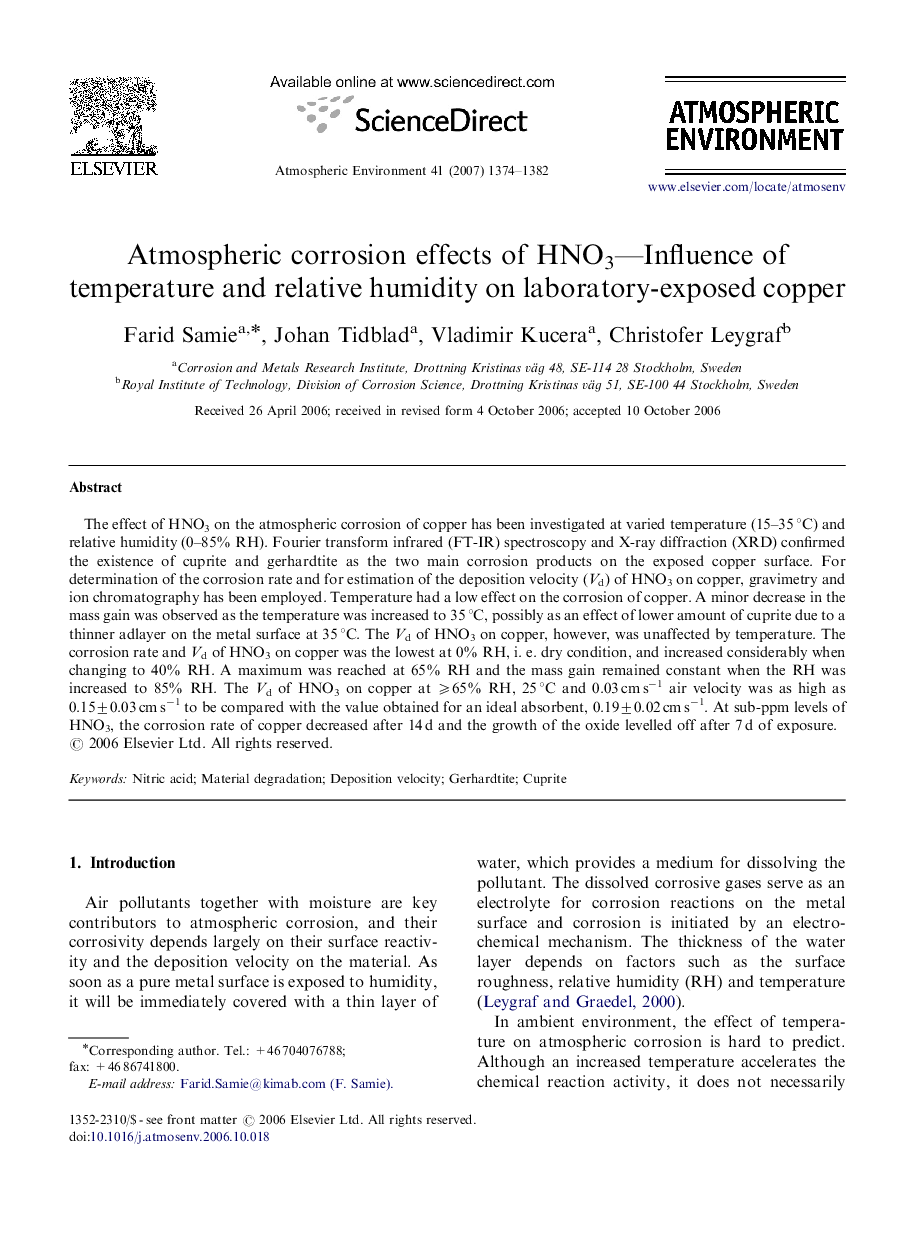| کد مقاله | کد نشریه | سال انتشار | مقاله انگلیسی | نسخه تمام متن |
|---|---|---|---|---|
| 4444127 | 1311225 | 2007 | 9 صفحه PDF | دانلود رایگان |

The effect of HNO3 on the atmospheric corrosion of copper has been investigated at varied temperature (15–35 °C) and relative humidity (0–85% RH). Fourier transform infrared (FT-IR) spectroscopy and X-ray diffraction (XRD) confirmed the existence of cuprite and gerhardtite as the two main corrosion products on the exposed copper surface. For determination of the corrosion rate and for estimation of the deposition velocity (Vd) of HNO3 on copper, gravimetry and ion chromatography has been employed. Temperature had a low effect on the corrosion of copper. A minor decrease in the mass gain was observed as the temperature was increased to 35 °C, possibly as an effect of lower amount of cuprite due to a thinner adlayer on the metal surface at 35 °C. The Vd of HNO3 on copper, however, was unaffected by temperature. The corrosion rate and Vd of HNO3 on copper was the lowest at 0% RH, i. e. dry condition, and increased considerably when changing to 40% RH. A maximum was reached at 65% RH and the mass gain remained constant when the RH was increased to 85% RH. The Vd of HNO3 on copper at ⩾65% RH, 25 °C and 0.03 cm s−1 air velocity was as high as 0.15±0.03 cm s−1 to be compared with the value obtained for an ideal absorbent, 0.19±0.02 cm s−1. At sub-ppm levels of HNO3, the corrosion rate of copper decreased after 14 d and the growth of the oxide levelled off after 7 d of exposure.
Journal: Atmospheric Environment - Volume 41, Issue 7, March 2007, Pages 1374–1382